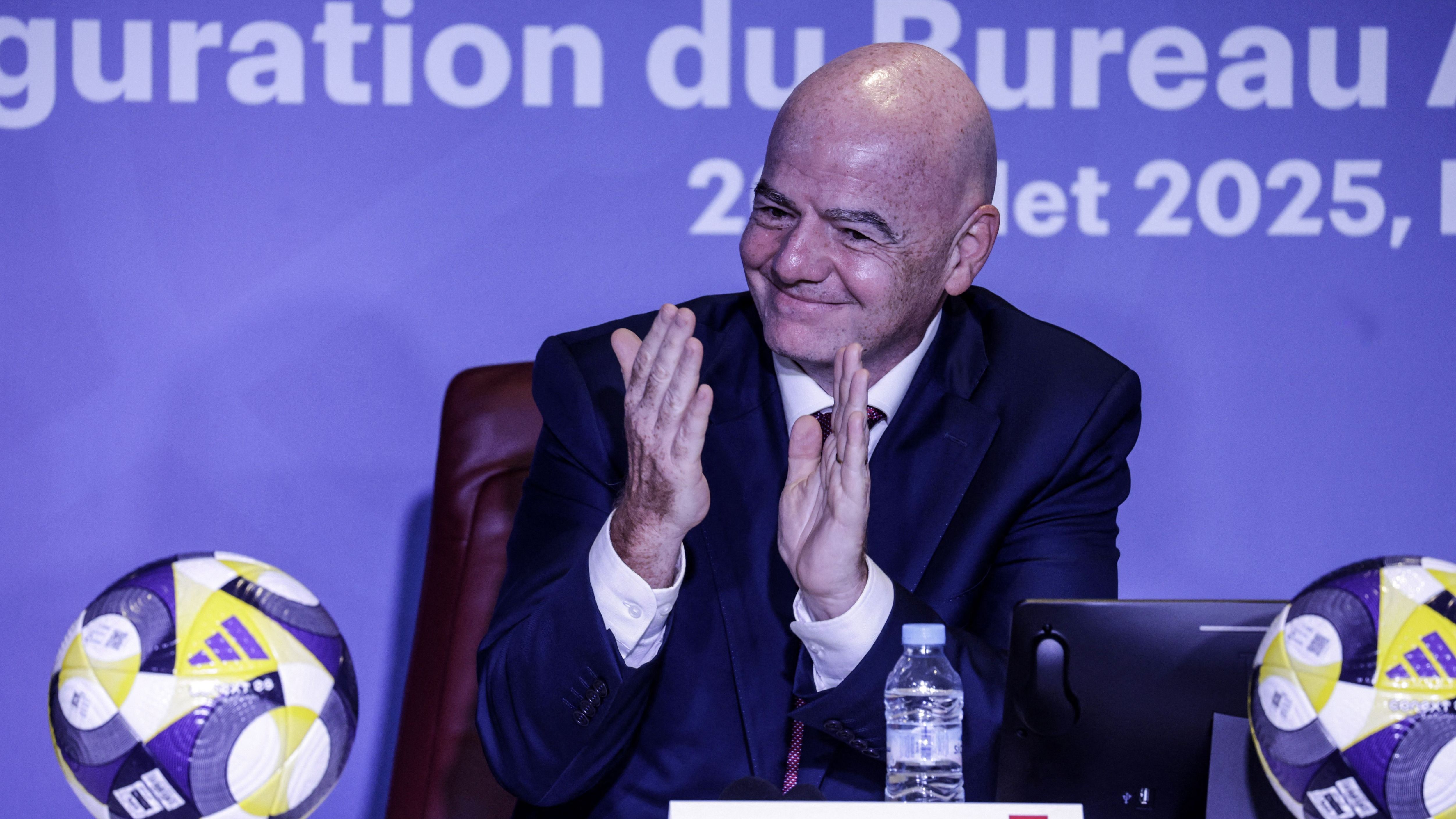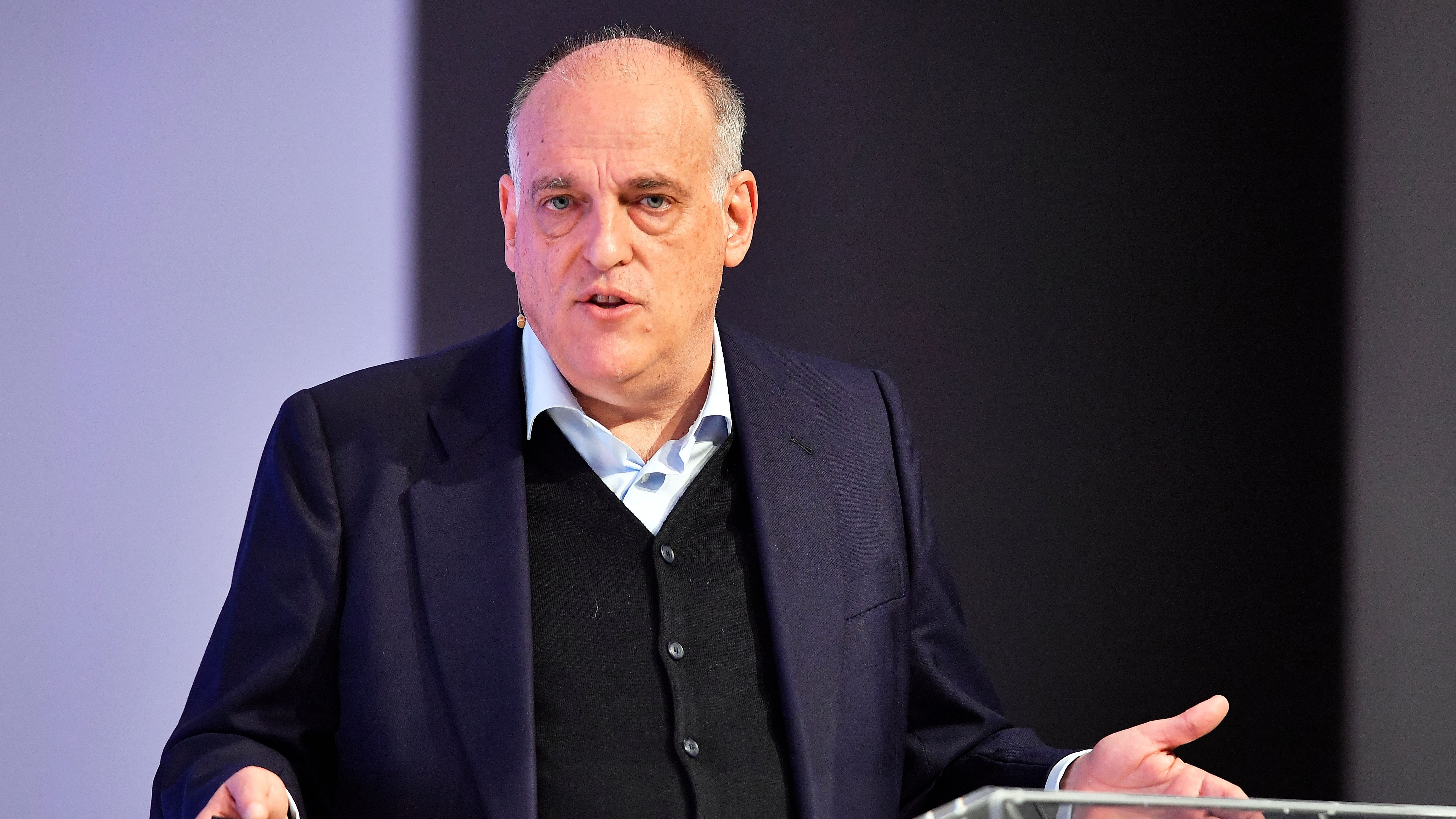Breaking Boundaries: Is the Era of Overseas Competitive Matches Upon Us?
In an era where global expansion drives the sports industry, the prospect of hosting official league games across continents is no longer just a distant dream. La Liga’s bold vision to stage a top-tier Spanish football match on American soil highlights the evolving landscape of international soccer, blending commercial ambitions with fan passions and logistical challenges.
Tebas’ Vision Takes Shape
La Liga’s outspoken leader, Javier Tebas, has a knack for turning bold declarations into reality through sheer determination and influence. His most recent proclamation? Bringing a high-stakes Spanish league encounter to the United States, specifically targeting Miami as the prime location.
“We’re working on securing the right slot in the schedule, but our aim is to make it happen in Miami, building on our past efforts. It won’t be an entire round of matches-just one per season, and that’s the plan,” Tebas shared with The Athletic back in August 2024.
These words sparked widespread debate. For years, European football leagues have eyed international venues to tap into lucrative markets. Friendly matches during the off-season in the U.S. have become routine, such as the recent Arsenal vs. Manchester United clash at SoFi Stadium in California as part of summer tours.
Yet, the idea of playing for actual league points overseas seemed far-fetched. Nevertheless, Tebas persisted, even pinpointing a specific city for the event.
Initial buzz pointed to a possible December timing around the holidays. However, discussions quieted down as practical hurdles emerged, despite Tebas’ savvy in negotiations. The mere traction his idea gained indicates that this long-opposed concept is edging toward reality.
Former legal hurdles are crumbling, and the triumph of the expanded Club World Cup-particularly in marquee clashes between elite European sides-provides compelling support. It appears unavoidable now: a genuine competitive soccer showdown in the U.S. is on the horizon, thrilling stateside enthusiasts while sparking outrage among traditional fans back home.
Whether viewed as progress or overreach, this shift seems unstoppable.







The Financial Imperative Driving Change
To put it bluntly, staging an official match in the U.S. could be a financial boon for any club. While teams value their domestic and international followers, the core motivation boils down to boosting profits amid polished PR efforts and digital outreach.
La Liga stands out in its eagerness, which is understandable given its frustration with the Premier League’s dominance in earnings. Tebas hasn’t shied away from voicing resentment toward the English top division’s financial edge, fueled by substantial TV deals, endorsements, and equitable prize distributions that empower even lower-tier clubs to rival Spanish giants in spending power.
This disparity stems partly from the Premier League’s fairer revenue sharing, where each league position can add millions, bolstered by worldwide broadcasting income that sustains underdogs. In contrast, La Liga’s contracts are less generous, leaving clubs more vulnerable. Recent data from Deloitte’s Football Money League shows the Premier League generating over €6 billion in revenue for 2023-24, nearly matching the combined totals of La Liga and the Bundesliga.
While the Bundesliga embraces fan-centric models like the 50+1 rule for supporter influence, La Liga seeks aggressive growth strategies. Attempts to play league games in the U.S. date back to 2018 and 2019, with detours to the Middle East for the Supercopa, but the American market remains the ultimate prize.
Evidence of potential windfalls abounds. With a dedicated New York office and partnerships with U.S. broadcasters, La Liga is committed to expansion. Massive turnouts at venues like AT&T Stadium in Texas for exhibition games underscore this, where a Real Madrid vs. Barcelona friendly in 2023 drew over 82,000 spectators despite being non-competitive, generating an estimated $20 million in gate receipts alone.
This demand reflects classic market dynamics: limited access inflates value. U.S. fans, passionate about the sport, shell out premium prices for rare live experiences, as seen in the willingness to attend sweltering summer matches. For instance, a Manchester City vs. Bayern Munich friendly in Green Bay attracted 78,000 fans, highlighting untapped enthusiasm.
Lessons from the Club World Cup and Evolving Appetites
The recent Club World Cup in the U.S. demonstrated real interest in elite competitions, even under challenging conditions. Early rounds with lesser-known teams like Al Ahly vs. Monterrey saw modest crowds of around 20,000, but as stakes rose, attendance surged-averaging 70,000 for knockout stages, culminating in over 85,000 for the Real Madrid vs. Manchester City final in 2025.
Critics questioned the tournament’s prestige, yet the commitment from top clubs delivered thrilling spectacles, outshining many domestic fixtures in intensity. This success challenges past views, including FIFA’s own Gianni Infantino, who once favored strengthening local leagues over importing foreign ones.
For more on the Club World Cup’s impact, check out FIFA’s official tournament page.
Overcoming Legal and Logistical Hurdles
What was once theoretical became litigious in 2019 when promoter Relevent Sports challenged FIFA and U.S. Soccer over restrictions on overseas games, alleging antitrust violations. After years of legal back-and-forth, a 2025 settlement with U.S. Soccer paved the way, with FIFA agreeing to review policies on match locations.
Relevent’s CEO noted, “This agreement aligns our efforts to elevate soccer in America, and we’re eager to facilitate more international events here.”
While U.S. Soccer remains neutral publicly, concerns linger about competition with MLS, which boasts growing viewership-averaging 300,000 per game in 2024. European incursions could dilute domestic appeal, as echoed by MLS Commissioner Don Garber’s call for balanced market growth.
Other leagues, like Serie A, are exploring similar moves, with its president expressing intent to pioneer U.S.-based fixtures. Learn more about Serie A’s global strategies at Lega Serie A’s official site.
Fan Backlash and Practical Challenges Ahead
Despite momentum, resistance persists. European fans staunchly oppose relocating games, viewing it as commercialization eroding traditions. Spanish supporter groups have protested vehemently, decrying efforts to “export” their league to places like Saudi Arabia or the U.S.
Similar sentiments quashed the Premier League’s “39th game” proposal in 2008, which envisioned extra matches in Asia or Australia but folded under fan uproar and regulatory pushback. The failed European Super League in 2021 further illustrated backlash against globalizing elite football at the expense of local access.
Logistically, the transatlantic divide poses issues: packed schedules, time zones, and venue conflicts, like overlapping with NBA events. Yet, with legal paths cleared and proven demand, these seem surmountable.
Ultimately, this evolution promises riches for clubs, ecstasy for U.S. audiences, and dismay for purists-ushering soccer into a bold, borderless future.
Is it likely that La Liga or other European leagues will play official games in the US in the next few years?
Understanding Supply and Demand Dynamics in Football
Hey there, football fans! If you’ve been keeping an eye on the global soccer scene, you’ve probably noticed how supply and demand dynamics are reshaping the sport. It’s not just about players and transfers anymore; it’s about where and how the games are played. With growing interest from American audiences, the idea of bringing competitive European football in the U.S. is gaining traction. But what’s driving this shift? Let’s dive in.
At its core, supply refers to the availability of high-stakes matches, while demand comes from fans craving more access to their favorite teams like Manchester United, Real Madrid, or Bayern Munich. Historically, European leagues have kept official games within their borders, but that’s changing fast. The U.S. market, with its massive sports economy and passionate soccer community, represents untapped potential. Imagine the thrill of watching a Premier League fixture live in New York or Los Angeles – it’s not as far-fetched as it sounds.
The Role of Globalization in Supply and Demand
Globalization has supercharged these dynamics. Streaming services and social media have made European football accessible worldwide, spiking demand in regions like North America. Clubs are responding by eyeing international expansions to meet this hunger, balancing the supply of content with revenue-generating opportunities.
- Increased fan engagement through digital platforms boosts demand.
- Clubs seek new markets to supply exclusive experiences.
- Economic pressures push for innovative revenue streams.
Collapsing Legal Barriers in International Football
One of the biggest hurdles to hosting competitive European football in the U.S. has been legal restrictions. FIFA and UEFA have long enforced rules that keep official league matches within domestic territories. But these collapsing legal barriers are opening doors like never before.
Recent court rulings and policy shifts are challenging the status quo. For instance, the European Court of Justice’s decisions on sports governance have weakened monopolistic controls, allowing clubs more freedom to organize events abroad. In the U.S., antitrust laws are being scrutinized, potentially paving the way for foreign leagues to play competitive games on American soil without fear of sanctions.
Key Legal Milestones
Let’s break down some pivotal moments:
| Year | Event | Impact on Football |
|---|---|---|
| 2021 | Super League Ruling | Highlighted UEFA’s limits on club autonomy |
| 2023 | FIFA Policy Shift | Allowed more flexibility for international friendlies |
| 2024 | U.S. Antitrust Case | Challenged barriers to foreign competitions |
These changes mean that what was once impossible – like a La Liga match in Miami – could soon become routine, fueled by supply and demand dynamics.
Escalating Revenue Ambitions of Football Clubs
Money talks, especially in football. Escalating revenue ambitions are a massive driver behind this push. European clubs are under pressure to maximize earnings amid rising player wages and operational costs. The U.S. offers a lucrative market with high ticket prices, sponsorship deals, and broadcasting rights.
Think about it: A single competitive match in the States could generate millions more than a home game in Europe. Clubs like Barcelona and Juventus have already tested the waters with preseason tours, raking in substantial profits. But why stop at friendlies? Official games would amplify this, satisfying the demand from American fans while supplying clubs with fresh income streams.
Revenue Comparison: Europe vs. U.S. Markets
Here’s a quick look at potential revenue boosts:
- Average European match ticket: $50-$100
- U.S. premium event ticket: $150-$500
- Broadcasting deals: U.S. networks pay billions for rights
The Club World Cup as a Catalyst
Enter the Club World Cup – the game-changer. FIFA’s revamped tournament, set to expand in 2025, will feature top clubs from around the world, including Europeans, competing in neutral venues. Rumors suggest the U.S. could host parts of it, acting as a catalyst for broader acceptance of international competitive play.
This event isn’t just a one-off; it’s a testing ground. By showcasing high-level matches in America, it demonstrates the viability of competitive European football in the U.S., influencing leagues to follow suit. The Club World Cup could normalize the idea, breaking down remaining barriers and aligning with escalating revenue ambitions.
How the Club World Cup Influences Dynamics
From a fan’s perspective, it’s exciting. Imagine cheering for your team in a global showdown right at home. For clubs, it’s a revenue bonanza, blending prestige with profit.
Is Competitive European Football in the U.S. on the Horizon?
So, is it really happening? All signs point to yes. With collapsing legal barriers, escalating revenue ambitions, and the Club World Cup as catalyst, the stage is set. Experts predict that within the next 5-10 years, we could see official European league games stateside, driven by supply and demand dynamics.
Challenges remain, like logistical issues and fan backlash in Europe, but the momentum is undeniable. For American soccer enthusiasts, this could mean more access to world-class action without crossing the Atlantic.
Benefits of Hosting European Matches in the U.S.
Beyond the hype, there are real perks. Hosting competitive European football in the U.S. could:
- Boost local economies through tourism and events.
- Enhance cultural exchange between continents.
- Grow soccer’s popularity, inspiring young talents.
- Provide fans with affordable, accessible live experiences.
Practical Tips for Fans Preparing for This Shift
If you’re excited about this possibility, here are some tips to get ready:
- Follow FIFA and league updates for announcements.
- Join fan clubs for exclusive ticket access.
- Save up for premium experiences – prices might be steep!
- Explore streaming options as a backup.
Case Studies: Successful International Football Ventures
Let’s look at real examples. The International Champions Cup (ICC) has been hosting preseason matches in the U.S. for years, drawing massive crowds. In 2019, a Manchester United vs. Liverpool friendly in Michigan attracted over 100,000 fans, generating millions in revenue.
Another case: La Liga’s attempt to play a regular-season game in Miami in 2018 was blocked, but it sparked debates that led to collapsing legal barriers. These stories show the potential and the path forward.
A First-Hand Experience from a Fan
As someone who’s attended ICC games in the U.S., I can tell you the atmosphere is electric. Picture this: Tailgating like an NFL game, but with chants of “Olé!” It’s not just a match; it’s a cultural fusion that leaves you buzzing. If competitive games arrive, it’ll be even more intense – a dream for any soccer lover.









